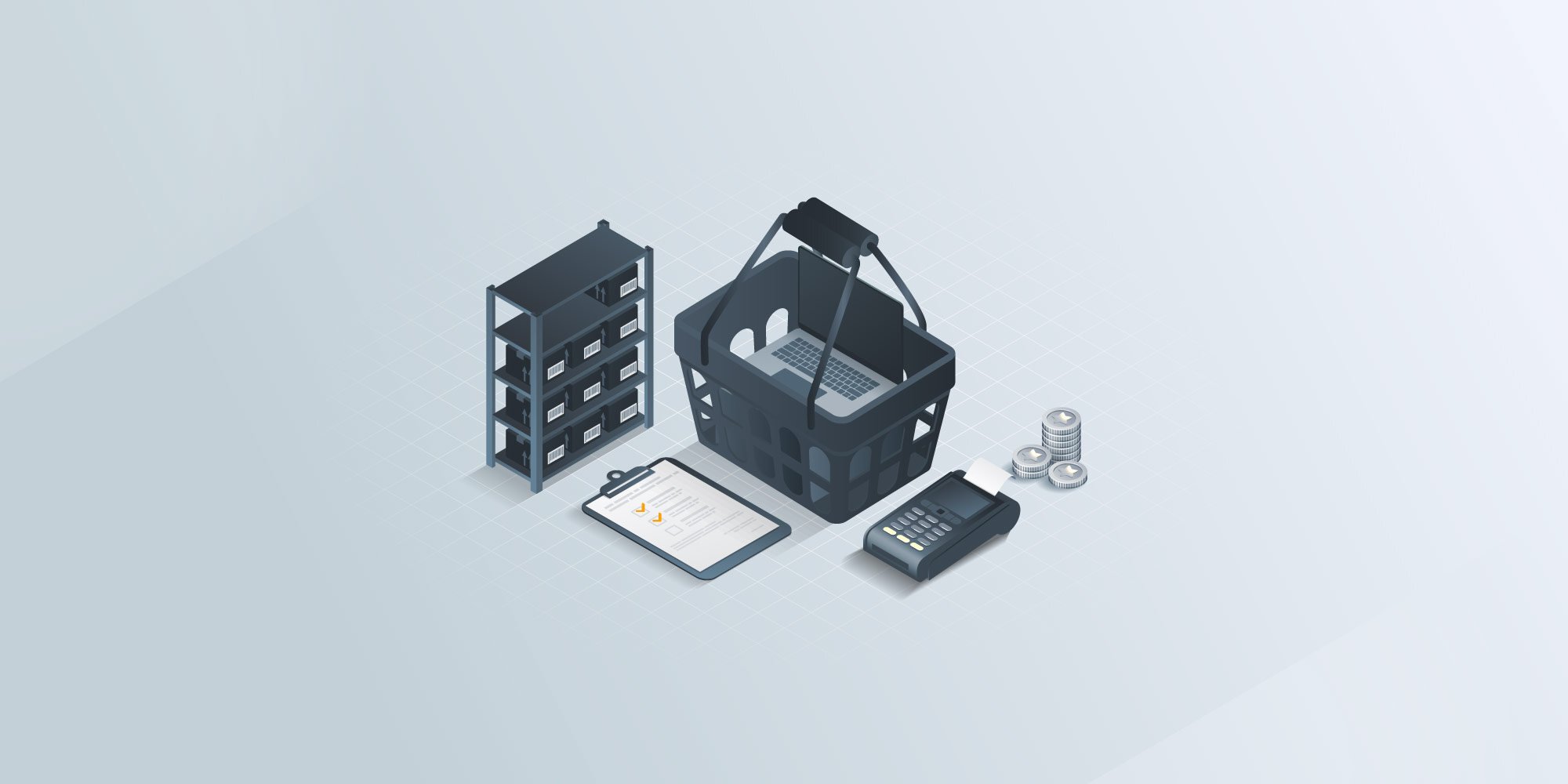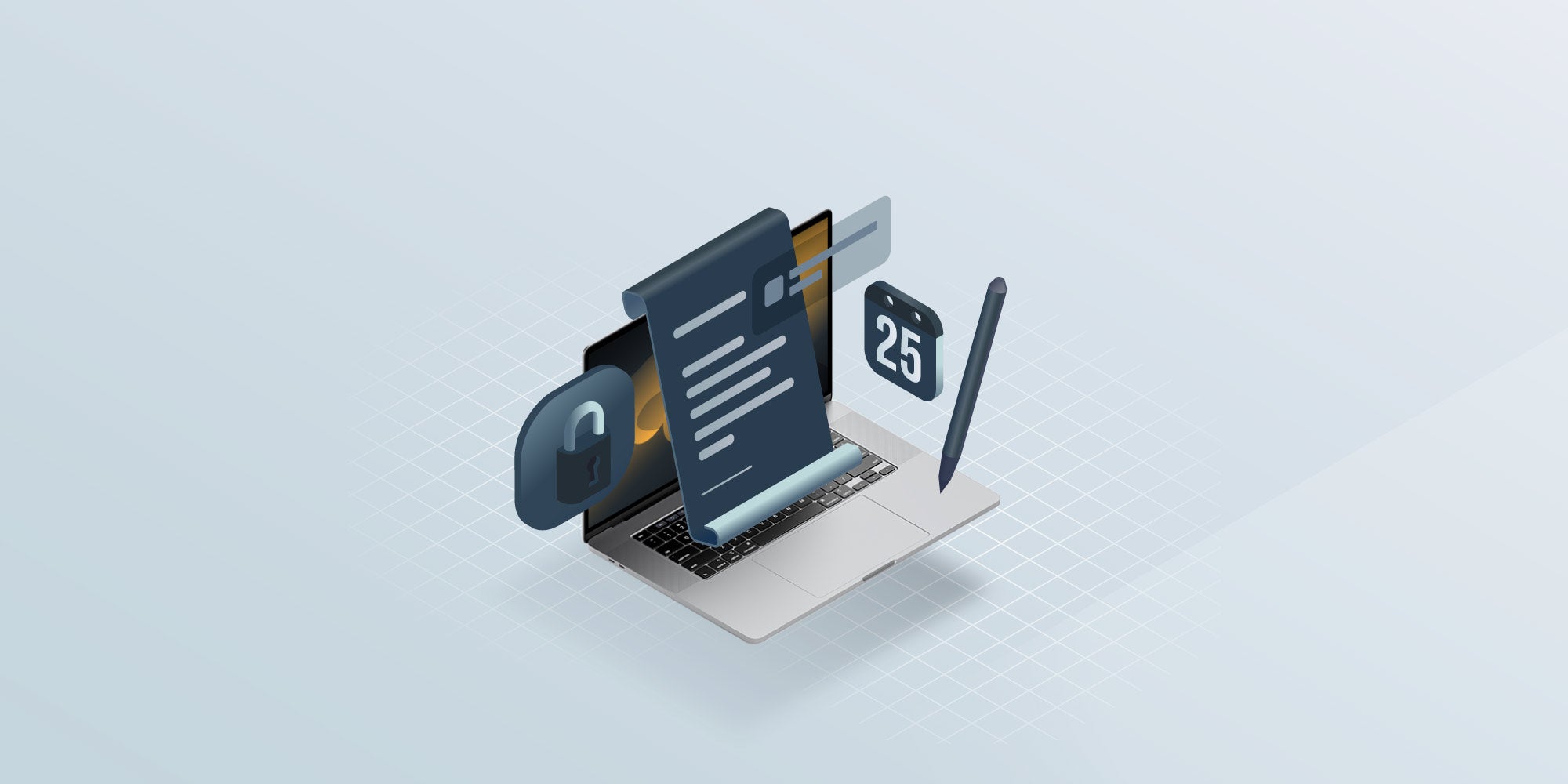What Is SaaS Sprawl & How Can You delete in IT with GroWrk?
 GroWrk Team
GroWrk Team
You probably already know your team uses dozens of SaaS apps. But are you sure you know all of them? For many IT teams, this is a reality: managing a growing number of subscriptions, often with little oversight. The result? SaaS sprawl. It silently drains budgets, creates security risks, and makes IT management a nightmare. Companies waste up to 25% of their SaaS spending due to poor visibility and a lack of centralized control.
In this article, you’ll learn what SaaS sprawl is, why it matters, and how you can manage it effectively.
Key takeaways
-
SaaS sprawl means uncontrolled growth of SaaS applications within the organization, resulting in increased costs, security risks, and operational inefficiencies.
-
Decentralized procurement and a lack of centralized management are the primary causes of SaaS sprawl, resulting in redundant applications and complex budgeting.
-
Regular SaaS audits, centralized procurement policies, and investing in SaaS management tools are the ways to control and mitigate the impact of SaaS sprawl.
What is SaaS sprawl?

SaaS sprawl refers to the uncontrolled growth of Software as a Service (SaaS) applications within a company. This phenomenon can lead to challenges in management and oversight within the saas landscape. It’s a common issue, affecting approximately 70% of large enterprises.
The average organization utilizes approximately 110 SaaS applications, resulting in a fragmented and often unmanageable SaaS stack. As SaaS sprawl increases, managing it can be challenging due to many subscriptions, difficulty tracking usage and spending, and integration issues.
The importance of addressing SaaS proliferation cannot be overstated. SaaS sprawl can lead to increased costs, security and compliance risks, and operational inefficiencies without intervention. To avoid these pitfalls, businesses must understand the underlying causes and implement SaaS management strategies.
The hidden layers of SaaS: what IT is really managing
When people hear “SaaS sprawl,” they often think of a few productivity apps scattered across teams. But for IT, the landscape is much deeper—and more complex. Behind every device, every login, and every support ticket is a web of software that powers the business. And without a central strategy, that web can turn into a tangled mess.
Let’s break down the categories that IT teams typically manage—and where SaaS sprawl sneaks in:
| Category | Common apps | What IT has to manage |
|---|---|---|
| Helpdesk / Support | Zendesk, Freshdesk, Jira Service Management | Ticket volume, SLAs, routing rules, integrations, license assignments |
| Project management | Asana, Trello, Monday.com, Jira | Team-specific adoption, duplicative usage, cross-functional workflows |
| Asset management | GroWrk, Snipe-IT, Lansweeper | Inventory tracking, device assignment, lifecycle status, lost/stolen device workflows |
| Identity & access | Okta, Azure AD, OneLogin | Provisioning, role-based access, SSO integrations, offboarding flows |
| Device security | CrowdStrike, SentinelOne, Jamf | Compliance enforcement, patching, endpoint monitoring, threat response |
| Compliance & monitoring | Vanta, Drata, LogicMonitor | Audit trails, SOC 2/GDPR readiness, automated compliance checks |
| Collaboration tools | Slack, Microsoft Teams, Zoom | Communication overlap, security settings, guest access |
| Time tracking / Productivity | Harvest, Toggl, Clockify | Usage compliance, data privacy, workforce reporting |
The difference between SaaS sprawl and shadow IT
Understanding the difference between SaaS sprawl and Shadow IT is crucial to managing your organization’s software ecosystem. While these two are related, they require different approaches. Here’s how they differ:
|
Aspect |
SaaS Sprawl |
Shadow IT |
|---|---|---|
|
Definition |
The uncontrolled growth of SaaS applications within an organization. |
The use of unauthorized SaaS applications without IT’s formal approval. |
|
Cause |
Lack of centralized management or visibility over SaaS subscriptions. |
Employees are adopting tools independently to fulfill specific needs. |
|
Scope |
Involves both approved and unapproved SaaS tools, growing in number. |
Focuses specifically on unapproved apps that bypass IT governance. |
|
Impact on IT |
Leads to inefficiencies, redundant subscriptions, and difficulty tracking usage and costs. |
Poses security risks and compliance issues due to a lack of oversight. |
|
Security risks |
May expose the organization to vulnerabilities from redundant or unused apps. |
Introduces security gaps as unauthorized tools may lack necessary safeguards. |
|
Compliance risks |
Difficulty ensuring that all apps are compliant with industry standards (e.g., GDPR, SOC2). |
Non-compliant tools may lack necessary encryption or data handling protocols. |
|
Management approach |
Requires better visibility, centralized procurement policies, and regular audits. |
Requires educating employees on the risks and establishing a formal approval process for new tools. |
Causes of SaaS sprawl
.png?width=600&height=300&name=what%20is%20saas%20sprawl%20(1).png)
SaaS sprawl doesn’t happen all at once—it’s usually the result of gaps in processes, oversight, and communication. Understanding the root causes of sprawl is the first step toward regaining control over your SaaS environment. The table below outlines the most common contributors and their role in driving unnecessary complexity and costs.
| Cause | What it means | How it contributes to sprawl |
|---|---|---|
| Decentralized procurement | Departments or individuals purchase SaaS tools without going through IT or a central system. | Leads to redundant apps, inconsistent approval, and bloated software budgets with little oversight. |
| Lack of authorization | There’s no formal process to approve new SaaS purchases or evaluate tools before adoption. | Employees bring in apps that don’t meet compliance or security standards, increasing exposure and reducing visibility. |
| Shadow IT | Employees adopt tools on their own to solve immediate needs, bypassing IT policies. | Creates security gaps and makes it difficult for IT to track, manage, or integrate all tools in use. |
| Underutilization of tools | Teams don’t make full use of approved SaaS platforms, often due to poor onboarding or training. | Drives departments to adopt overlapping tools, increasing license sprawl and diminishing ROI on existing solutions. |
| Lack of centralized management | There’s no unified system to track all SaaS apps in use across the company. | IT loses control over inventory, procurement, and security—allowing duplication and ungoverned usage to grow unchecked. |
| Siloed software adoption | Departments adopt tools that only serve their own workflows without considering organization-wide integration. | Promotes redundant purchases and creates fragmented data systems, complicating collaboration and increasing inefficiencies. |
| Inadequate training | Employees aren’t educated on which tools are approved or how to use them effectively. | Results in poor tool adoption, redundant purchases, and low engagement with enterprise-grade solutions. |
What are the risks and challenges of SaaS sprawl?
.png?width=600&height=300&name=what%20is%20saas%20sprawl%20(2).png)
SaaS sprawl presents numerous risks and challenges to businesses, encompassing financial and operational inefficiencies. As organizations adopt multiple SaaS applications, managing spending, securing data, and complying with industry regulations becomes harder.
These challenges can have far-reaching consequences, ranging from financial waste and security concerns to legal issues resulting from non-compliance.
| Risk type | Cause | Impact | Solution |
|---|---|---|---|
| Uncontrolled spending | Decentralized purchasing by departments; lack of visibility into SaaS usage | Budget overruns, duplicated tools, underutilized subscriptions | Conduct regular SaaS audits; centralize procurement and license tracking |
| Security vulnerabilities | Unmanaged or outdated SaaS apps; users retaining access after role changes | Increased risk of data breaches and unauthorized access | Implement centralized access controls; audit app usage; enforce offboarding protocols |
| Compliance risks | Use of non-approved apps; lack of documentation or encryption standards | GDPR/SOC2 violations, legal penalties, reputational damage | Maintain a SaaS inventory; use compliance-friendly tools; enforce procurement and approval flow |
| IT inefficiency | Fragmented tool ownership; overlapping apps creating confusion | Wasted IT resources, integration issues, and lower team productivity | Consolidate tools with similar functions; improve inter-departmental communication |
Real-world example: A mid-sized company tackles SaaS sprawl
In 2025, businesses are grappling with the financial implications of unmanaged SaaS applications. According to LLCBuddy, the average business spends approximately $7,900 per employee annually on SaaS software, with small and medium-sized enterprises (SMEs) spending even more—around $11,200 per employee. Yet much of this spend goes unmonitored, unutilized, or entirely forgotten.
Here’s what’s happening inside many companies:
- 90% of organizations overspend by 20–30% on SaaS due to poor visibility, redundant tools, and lack of centralized control.
- Up to 50% of licenses sit unused for 90 days or longer, tying up budgets without delivering ROI.
- 68% of companies fail to cancel inactive subscriptions, even when usage data suggests they're no longer needed.
- 56% of enterprise apps are unmanaged, exposing businesses to compliance violations and shadow IT.
- Departments often purchase similar tools independently, creating overlap in functionality and inflated costs.
- SaaS renewal cycles go unnoticed, leading to auto-renewals of outdated or unused tools.
- Security risks rise as untracked apps fall out of the IT team’s purview, making access control and patching impossible.
- Compliance blind spots multiply, particularly with tools that aren’t aligned with GDPR, SOC 2, or HIPAA.
How can IT start fixing SaaS sprawl?
.png?width=600&height=300&name=what%20is%20saas%20sprawl%20(3).png)
SaaS sprawl can feel overwhelming, but with a few strategic actions, you and your IT team can take back control. Addressing the issue requires a combination of visibility, central processes, and ongoing monitoring. Here are the key steps that IT teams can take to tackle SaaS sprawl and regain control over the organization’s software ecosystem.
These will help businesses mitigate SaaS sprawl and maintain a streamlined environment.
| Step | What it solves | Why it matters | Tools/Actions |
|---|---|---|---|
| Inventory all SaaS apps | Lack of visibility into app usage and shadow IT | Helps identify underutilized, redundant, or risky apps | Conduct internal audits, use SaaS tracking tools, involve team leads |
| Establish centralized procurement | Decentralized purchases and redundant subscriptions | Reduces spend, enforces compliance, and streamlines IT oversight | Set approval workflows, document app requests, assign ownership |
| Invest in SaaS management tools | Manual tracking inefficiencies and data silos | Enables real-time monitoring and optimization of spend and usage | Adopt SaaS management platforms like Torii, Zylo, or BetterCloud |
| Educate teams on SaaS risks | Employees unknowingly adopting insecure or redundant tools | Promotes responsible usage, improves compliance, and reduces security risks |
Share training resources, run awareness sessions, create internal best practices |
Best practices for preventing SaaS sprawl
.png?width=600&height=300&name=what%20is%20saas%20sprawl%20(4).png)
Preventing saas sprawl calls for centralized procurement, explicit adoption rules, frequent employee training, and better inter-departmental communication—best practices.
These policies help to improve control and monitoring, therefore lowering the probability of SaaS sprawl and its related hazards.
| Best practice | Purpose | Benefit |
|---|---|---|
| Develop clear SaaS adoption guidelines | Standardize how teams evaluate and adopt new tools | Prevents unauthorized purchases and ensures only necessary, secure tools are used |
| Train and educate employees | Build awareness of security, compliance, and cost implications | Reduces risk of shadow IT and promotes responsible software use |
| Improve inter-departmental communication | Align IT with department needs and reduce overlap | Minimizes tool duplication and encourages coordinated purchasing decisions |
| Regularly audit your SaaS stack | Maintain ongoing visibility into app usage and spend | Identifies underused, non-compliant, or duplicate tools for optimization or removal |
| Use SaaS management platforms | Centralize monitoring, usage, cost, and compliance tracking | Enhances control, automates reporting, and reduces operational inefficiencies |
Take control of IT SaaS sprawl with GroWrk
GroWrk doesn’t just help you manage physical IT assets—it also helps your distributed team reduce SaaS sprawl through better visibility, automation, and control. Whether you’re managing hundreds of tools across multiple regions or struggling with app overlap and shadow IT, GroWrk gives you the structure to regain control without slowing teams down.
Here’s how GroWrk helps:
-
Centralized device + SaaS visibility
Manage hardware and the software tied to each device from one platform. Track usage, assign tools, and monitor app performance across your fleet. -
Automated provisioning and offboarding
Eliminate orphaned licenses and unused accounts with automated workflows that grant—and revoke—access based on role, region, or lifecycle stage. -
Spend and license reporting
Monitor tool usage, flag underused apps, and reduce wasted spend with built-in analytics tied to your procurement and IT asset data. -
Built-in compliance enforcement
Ensure only approved, secure tools are deployed. GroWrk helps enforce access policies, audit trails, and compliance with SOC 2, GDPR, and more. -
Secure retrieval and reconfiguration
When an employee leaves, GroWrk facilitates secure device retrieval, wipes credentials, and reassigns tools for the next user—no loose ends, no sprawl. -
Global standardization, local execution
From San Francisco to Singapore, GroWrk ensures that your teams follow the same procurement and SaaS provisioning standards—adapted to local compliance needs.
Ready to simplify SaaS management for your distributed team? Schedule a demo and see how GroWrk helps IT teams scale with control.
Frequently asked questions
What is SaaS sprawl?
SaaS sprawl occurs when an organization has an uncontrolled proliferation of SaaS applications, which can result in higher expenses, heightened security vulnerabilities, and operational inefficiencies. Addressing this issue is crucial for improving cost management and ensuring security.
How can I identify SaaS sprawl in my organization?
To identify SaaS sprawl in your organisation, look out for an increasing number of software subscriptions, security challenges in tracking usage and expenses, and integration issues. Recognising these signs will help you manage your resources better.
What are the main causes of SaaS sprawl?
SaaS sprawl is caused by decentralised procurement processes, a lack of central management, and the ease of getting multiple SaaS tools. Fixing these will help you regain control of your software usage.
What are the financial implications of SaaS sprawl?
SaaS sprawl can lead to uncontrolled spending and unexpected costs due to duplicate services and redundant apps, so better management and visibility into spending are key. Keeping track of subscriptions is crucial to mitigate these financial implications.
How can I manage and prevent SaaS sprawl?
To effectively manage and avoid SaaS sprawl, conduct regular audits and establish centralized procurement policies while leveraging SaaS management tools and enhancing communication between departments. These steps will help maintain control over your software landscape.







